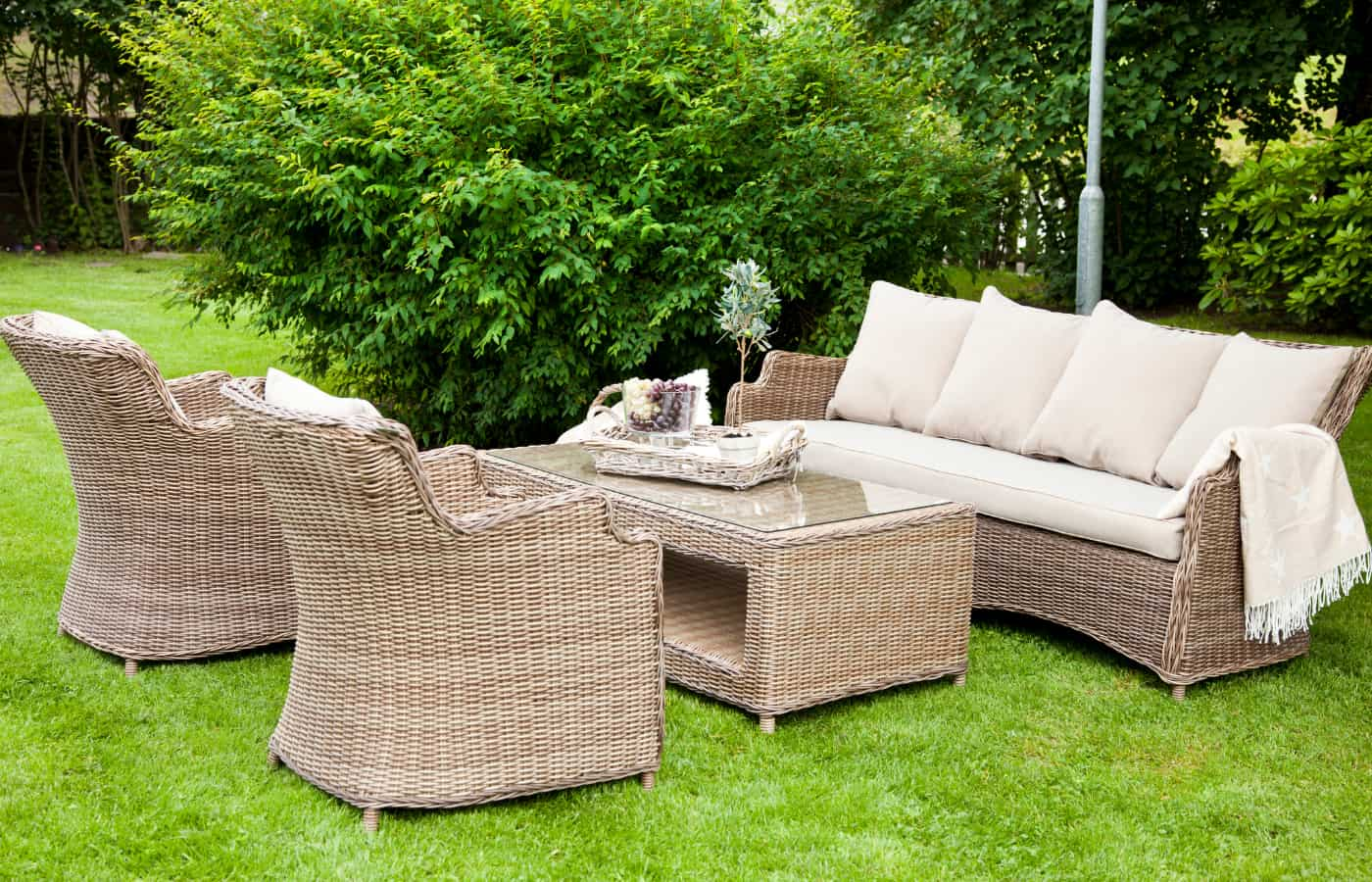What is wicker material?
Wicker refers to a particular method of weaving, not to a specific raw material. Artisans have employed the technique for generations to craft items—like chairs, storage baskets, and accent pieces—that deliver a surprising combination of lightness and sturdiness. In the method, slender, round strands of a pliable fiber are woven around a supportive frame, creating intricate, resilient surfaces.
Shop wicker furniture at HC Luxury Outdoor.
Classic pieces typically relied on native plant components:
-
Rattan—lithe and resilient, the vine-like stem of this palm bends without breaking.
-
Bamboo—stationary stalks are lightweight and hollow, added to a frame for extra structure, rather than as the primary weaving fiber.
-
Willow and reed—soft and pliable, both are easily shaped and commonly used in rustic baskets and light seating.
Although natural wicker has a lovely, earthy charm, it doesn’t stand up to constant outdoor use. In rainy conditions, humidity makes the strands swell and lose their formed shape; unshaded sunlight eventually turns them stiff and easily splits.
To solve this, today’s outdoor wicker is commonly engineered from synthetic resins—mostly high-density polyethylene (HDPE), PVC, or vinyl. Terms like resin wicker or all-weather wicker are routinely used. The synthetic alternatives deliver several decisive benefits:
Moisture and UV safety—the strands repel the elements rather than absorbing, guarding the original shape and color.
Resilient surfaces—shocks, scrapes, and exposure do not mar the woven parts, and fading is typically slow or absent.
Minimal upkeep—a simple rinse with soapy water removes dirt and prevents mildew from settling in.
Design versatility lets this weave take on any texture or hue you imagine, so it can suggest classic wicker yet still have a sharp, contemporary edge.
The stretch goal of durable wicker comes to life when you weave it over powder-coated aluminum or brushed stainless frames. You get the warmth of a skilled artisan’s texture, the chill of modern minimalism, and the toughness of materials made to laugh in the face of sun and rain.
How to Care for Wicker Material?
Regular Cleaning
-
Synthetic wicker: Spray with a garden hose to remove dust and pollen. Use a soft brush and mild soap solution for deeper cleaning, making sure to get into the weave’s crevices. Rinse thoroughly and allow to air-dry.
-
Natural wicker: Avoid soaking. Instead, wipe gently with a slightly damp cloth or vacuum with a brush attachment to remove dirt. Excess moisture can weaken fibers.
Mold & Stains
-
In humid environments, mildew can grow in the weave. Mix 1 cup of white vinegar with 3 cups of water, apply with a soft cloth or spray bottle, and scrub gently.
-
For stubborn stains, a diluted dish soap solution usually suffices. Always rinse and dry thoroughly.
Sun & Moisture Management
-
Synthetic wicker is UV-stabilized, but long hours in direct sunlight can eventually cause fading. Placing furniture in shaded areas or using covers will extend its vibrancy.
-
Natural wicker is more sensitive — it can dry out, crack, or warp in sun and rain. Keep it under a covered patio or indoors when not in use.
-
After rain, allow all wicker (especially natural) to dry completely before covering or storing.
Preventive Maintenance
-
Synthetic wicker: Inspect for loose strands or fraying. These can often be re-woven or glued back into place.
-
Natural wicker: Refinish occasionally with a clear outdoor sealant or varnish to protect fibers from moisture and UV damage. If paint or finish chips, sand lightly and touch up promptly.
-
Cushion pads should also be rotated and stored properly to prevent uneven wear and mildew.
Storage & Protection
-
Use breathable furniture covers to keep wicker protected during the off-season or when not in use. Avoid airtight plastic covers, which trap moisture and encourage mold.
-
Store indoors or in a dry, ventilated shed during winter or prolonged wet seasons.
-
Always clean and dry furniture before storing to prevent mildew from forming during downtime.
FAQs
Is wicker the same as rattan?
No, wicker is the weaving style; rattan is a material.
Which lasts longer outdoors?
Synthetic wicker.
Can I hose down wicker furniture?
Yes, synthetic only. Natural wicker should not be soaked.
What if the wicker gets damaged?
Small repairs possible; consult experts for major damage.



